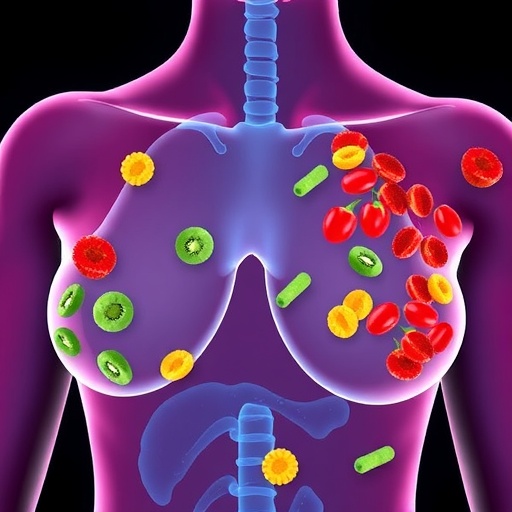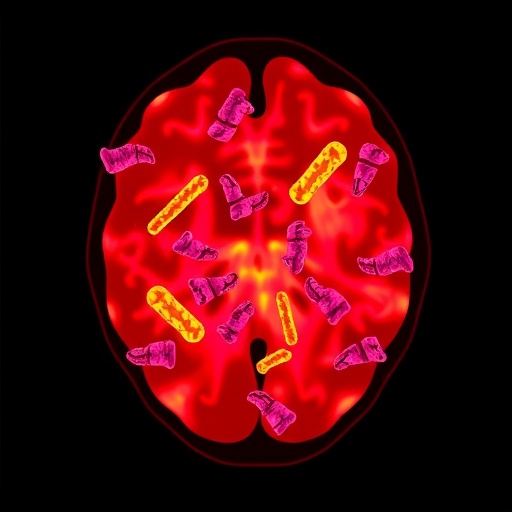
In the ongoing quest to unravel the complex relationship between diet and cancer risk, new findings from the Swedish National March Cohort offer compelling insights into the role of dietary antioxidants in breast cancer prevention. Published in the esteemed journal BMC Cancer, this recent study investigates the impact of dietary Non-Enzymatic Antioxidant Capacity (NEAC) on breast cancer risk over nearly two decades of follow-up data. By quantifying the total antioxidant potential of diets consumed by thousands of women, researchers aimed to shed light on how these compounds might influence the development of one of the most common cancers worldwide.
Dietary antioxidants are compounds that neutralize free radicals—highly reactive molecules that can damage cells and DNA, potentially triggering carcinogenesis. Unlike enzymatic antioxidants, which are naturally produced within the body, non-enzymatic antioxidants are obtained exclusively from external sources, primarily through food. These include abundant phytochemicals found in fruits, vegetables, grains, and other plant-based foods. However, existing epidemiological evidence linking antioxidant intake to reduced breast cancer risk remains inconclusive, largely due to methodological variations and differing antioxidant assessment strategies.
The Swedish National March Cohort study included an impressive sample of 24,950 women recruited between 1997 and 2016. Researchers used detailed dietary information collected from a validated 96-item food frequency questionnaire to estimate total dietary NEAC. This metric compiled the cumulative antioxidant potential of foods reported in the participants’ diets, providing a holistic measure rather than focusing on individual antioxidants such as vitamin C or E. Importantly, the study assessed three distinct sources of NEAC: total intake, NEAC derived from fruits and vegetables, and NEAC derived from grains.
.adsslot_R7F5M6LVcu{width:728px !important;height:90px !important;}
@media(max-width:1199px){ .adsslot_R7F5M6LVcu{width:468px !important;height:60px !important;}
}
@media(max-width:767px){ .adsslot_R7F5M6LVcu{width:320px !important;height:50px !important;}
}
ADVERTISEMENT
Over a median follow-up of more than 19 years, the cohort yielded 1,142 recorded breast cancer cases. Among these, 136 cases occurred in pre-menopausal women while 975 were post-menopausal. Employing rigorous multivariable Cox proportional hazards modeling, the study examined associations between NEAC intake and breast cancer incidence, adjusting for an array of potential confounders including demographic, lifestyle, and reproductive factors. This analytic approach allowed for an estimation of hazard ratios (HR) that reflect risk differences between individuals across quartiles of antioxidant consumption.
Intriguingly, the findings revealed a consistent pattern suggesting an inverse relationship between total dietary NEAC and breast cancer risk, particularly among post-menopausal women. Women in the highest quartile of total NEAC intake exhibited a 15% lower risk of breast cancer compared to those in the lowest quartile, although this association bordered on statistical significance (adjusted HR = 0.85, 95% CI 0.69-1.04). More robust evidence emerged when focusing exclusively on the post-menopausal subgroup, where a stronger inverse association was observed (HR = 0.76, 95% CI 0.60-0.96), alongside a significant trend across increasing NEAC levels.
Delving deeper, the study’s differentiation of NEAC sources unearthed a compelling nuance: the protective association against breast cancer appeared driven predominantly by antioxidants derived from fruits and vegetables. Intake of fruit and vegetable-based NEAC was linked with roughly a 21% reduction in breast cancer hazard (HR = 0.79, 95% CI 0.64-0.97). In stark contrast, NEAC coming from grain sources showed no meaningful association, suggesting that not all dietary antioxidants may confer equivalent benefits in cancer prevention.
However, robustness analyses that employed multiple imputation to account for missing covariate data slightly attenuated the strength of observed associations. While the inverse trends remained in place, statistical significance was lost, highlighting the inherent challenges of observational research and the delicate balance between statistical power and data completeness. The authors prudently interpret these findings as suggestive rather than definitive, emphasizing the necessity of further confirmatory studies to elucidate these relationships.
Mechanistically, the findings align with biological paradigms postulating that antioxidants protect against oxidative stress-induced DNA damage, reduce chronic inflammation, and modulate cellular signaling pathways involved in tumor initiation and progression. Fruits and vegetables, rich in polyphenols, carotenoids, and flavonoids, offer a diverse array of antioxidant compounds that may synergistically contribute to these protective effects. Conversely, grains may contain different phytochemical profiles or lower antioxidant bioavailability, potentially explaining their lack of association.
This research carries significant implications for public health dietary guidelines. While previous nutritional recommendations underscore fruits and vegetables for their broad spectrum of health benefits—including cardiovascular and metabolic disease prevention—this study reinforces their potential role in reducing breast cancer risk. Such evidence supports ongoing advocacy for plant-based diets rich in antioxidant capacity as a pragmatic strategy in cancer prevention frameworks.
Nevertheless, the study also acknowledges limitations inherent to observational cohort designs. Dietary assessments based on self-reported food frequency questionnaires are susceptible to recall bias and measurement error. Furthermore, antioxidant capacity databases, while comprehensive, cannot fully capture bioavailability and metabolism complexities of antioxidants in humans. The possibility of residual confounding by unmeasured lifestyle or genetic factors also cannot be completely excluded.
In conclusion, the Swedish National March Cohort contributes to a growing body of literature highlighting the importance of dietary antioxidants in mitigating breast cancer risk, especially among post-menopausal women. The delineation of fruit and vegetable-derived antioxidant capacity as a key driver in this association provides a valuable nutritional focus for future interventions and mechanistic research. However, the cautious interpretation prompted by sensitivity analyses underscores the need for continued exploration through prospective studies and clinical trials to establish causality and inform evidence-based nutritional recommendations.
The nuanced insights from this extensive population-based study invigorate the discourse on diet and cancer prevention, emphasizing the complexity of nutritional epidemiology and the critical need to consider total dietary patterns rather than isolated nutrients. As scientists continue to explore the molecular interplay between diet and carcinogenesis, the potential of leveraging natural antioxidant compounds as part of comprehensive cancer-control strategies remains an exciting frontier.
For individuals and health professionals alike, these findings reinforce the timeless advice to embrace a diet abundant in diverse fruits and vegetables—a routine habit not only nourishing but potentially life-saving. The promise of utilizing dietary antioxidant capacity as a modifiable factor in breast cancer risk underscores the profound interplay between everyday choices and long-term health outcomes.
Subject of Research: The association between dietary non-enzymatic antioxidant capacity and breast cancer risk in a large prospective cohort study.
Article Title: Dietary non-enzymatic antioxidant capacity and risk of breast cancer: the Swedish National March Cohort.
Article References:
Mariosa, D., Ponzano, M., Grotta, A. et al. Dietary non-enzymatic antioxidant capacity and risk of breast cancer: the Swedish National March Cohort. BMC Cancer 25, 1310 (2025). https://doi.org/10.1186/s12885-025-14658-z
Image Credits: Scienmag.com
DOI: https://doi.org/10.1186/s12885-025-14658-z
Tags: antioxidant-rich foodsbreast cancer risk factorscancer prevention through dietdietary antioxidants and breast cancerdietary intake and cancer riskepidemiological evidence on antioxidantsfree radicals and carcinogenesislong-term dietary studiesnon-enzymatic antioxidant capacityphytochemicals in plant-based foodsSwedish National March Cohort studywomen’s health and nutrition





